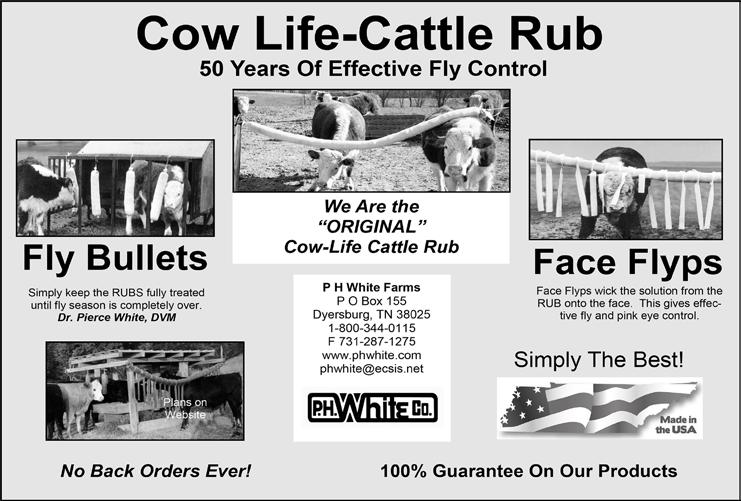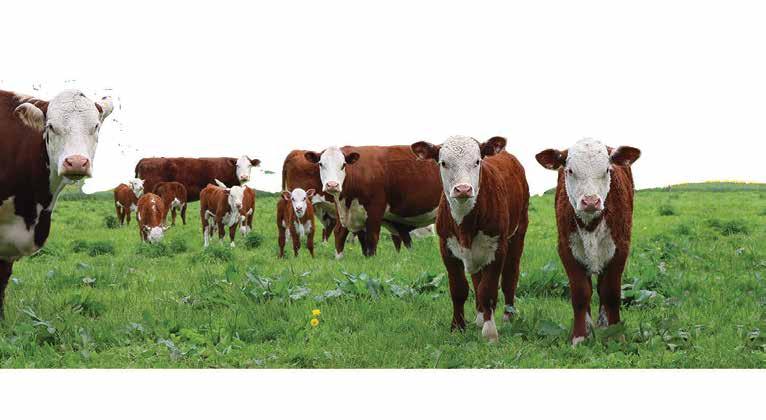
7 minute read
Spring into Safety
Alyssa Dick Program Specialist, Value Added Agriculture Program, Iowa State University Extension and Outreach
Spring is officially here which means everyone is out and about enjoying the warmer weather. With this also comes increased yard work, field work and other outdoor projects. While we all love being outdoors more, we need to keep in mind some general safety guidelines when working around the farm. Agriculture ranks among the most hazardous industries and those working on a farm or acreage are at very high risk for fatal and nonfatal injuries. Farming is also one of the few industries in which family members are also at risk for on farm injuries. According to the Iowa Department of Public Health, about 1,000 farm-related injuries receive medical attention yearly. Review the safety tips from Farm Safety For Just Kids below and work towards keeping yourself and others safe around the farm this year. Tractor Safety Farm machinery, including tractors, is the leading source of fatalities on the farm in the United States. Each year, 250-350 people of all ages die in tractor incidents in the United States. Tractors are the single leading source of fatalities among youth working on the farm; tractors account for 43% of vehicle deaths. Families have had a dangerous tradition of allowing children to ride on tractors, but you should never allow a rider on the drawbar, fender, lap, or loader bucket. Riders face the hazard of being run over as they are the first to bounce off the tractor. A rider can also distract the driver or bump controls. Roll Over Protection Structures (ROPS) are not designed to protect riders-only the operator. Many people believe that tractor cabs can keep riders safe. This is not true. A cab is designed to protect only the tractor operator; it does not prevent a rider from being thrown from the cab and run over. Doors might not latch and windows can pop open. And if the tractor overturns, the rider can be thrown or crushed against the tractor frame. Learning about Power Take-Off (PTO) safety is often one of the first lessons on the farm. Power Take-Offs are used on the farm to transfer power from the tractor to another implement such as a grain auger, manure spreader, mower, or feed grinder, and they are found on most tractors. PTOs operate by turning at speeds of 540 or 1,000 rotations per minute. This speed and the device make the PTO very dangerous. An entanglement can occur in the driveline between the tractor and the implement and can cause some of the most serious injuries on the farm. Equipment manufacturers provide shields for PTO drivelines to protect operators and bystanders from becoming entangled in the rapidly spinning shaft. Never step over the PTO even if it is not running. Make a habit of walking around it at all times. Do not wear jewelry or loose clothing and always tie back long hair. Animal Safety According to National Safety Council, 17% of all farm injuries involve animals. In comparison to humans, animals see in black and white, have difficulty judging distances, have extremely sensitive hearing, are frightened by load noises and high frequency sounds, and are very protective of their young. Many of these factors cause animals to spook and respond skittish and frightened. Even though an animal may look friendly, all animals need to be treated with respect as they can be unpredictable. Teach children to be alert when around livestock and do so yourself.
CONTINUED ON PAGE 50
THE MOST COMPLETE HAY LINE Cut • Dry • Harvest
Save time, money and improve hay quality with KUHN.
Mower Conditioners
THE HAY AND FORAGE TOOL SPECIALISTS
Mowers Tedders Mergers Wheel Rakes Rotary Rakes Our commitment is to help you gain a maximum return on investment by providing products known for performance, reliability, and longevity.
Riverside Tractor & Equipment Augusta Sanford and Sons Sales & Service Bowling Green
INVEST IN QUALITY ®
Wright Implement 1
Kentucky Bardstown, Campbellsville, DeMossville, Elizabethtown, Florence, Glasgow, Hardinsburg, Owensboro, Shelbyville, Shepherdsville
Indiana Charlestown, Corydon, Orleans, Seymour Meade Tractor Danville, Georgetown Harlan, London, Mt. Sterling, Paris, Richmond, Somerset Holbrook Implement Campton Siler Implement Corbin Rose Farm Supply Flemingsburg Lawson Tractor & Implement Lebanon, Sanford
Visit your local KUHN Hay and Forage Dealer today!
McKeel Equipment Murray L. A. Yount Haying Equipment Pleasureville Bridgeport Equipment & Tool Wurtland
Gases produced by animal wastes can be dangerous to children and adults. Those unaware of the dangers can become incapacitated before they even know they are in danger. Toxic gases, especially in confined spaces such as manure pits, silos and grain bins, can pose hazards to humans and animals. Four gases of major concern found in manure pits are: hydrogen sulfide (HS), ammonia (NH), carbon dioxide (CO) and methane (CH). The primary health hazards of these gases are: • Toxic or poisonous reactions that can occur in people or animals • Oxygen depletion can result in suffocation.
During agitation of the pit, hydrogen sulfide, ammonia and carbon dioxide gases, which are all heavier than air, will replace the oxygen in the air. This can occur even under good ventilation conditions • Explosions can occur when oxygen mixes with the gases. This is primarily a problem with methane.
If possible, avoid entering a manure pit at all times, even if the pit has been emptied. Ventilate manure pit and buildings during agitation of waste, never enter a pit during agitation, and when repairing a waste storage area, wear an oxygen mask and tank. Chemical Safety Chemicals such as pesticides, herbicides, insecticides, fungicides, and fertilizer can enter the body by breathing, absorption through skin, eating or drinking, injection such as cuts or needles, and eyes. 97% of chemical spraying exposure happens through contact with the skin. When using pesticides, always check the pesticide label and see what PPE (Personal Protective Equipment) is required by law. Each container label has specific requirements for PPE based on the ingredients in the chemical. Because most people do not wear their PPE, even though they should be, if you are out in the field spraying, at least stop, shut off sprayer, drive ahead into the dry plants, get out, and correct problem. Then back up, turn sprayer back on and continue. Do not try to fix the problem in the recently sprayed plants. To prevent chemical hazards, lock all chemicals away from young children, heed all warnings listed on chemical labels, store all chemicals in original containers, and if chemical exposure takes place, seek immediate medical attention. Another important prevention method is safe laundry practices, which is something a lot of us may not think about. Protective clothing during chemical application will be contaminated. When the clothing enters the house, the contamination can expose others in the household by washing machine residue to other clothing, direct contact, or indirect contact by placing garments on furniture, floors, and counters. Some general safe laundry tips are: wash PPE separate from family members, use hot water when washing, and rinse washing machine before washing other clothing. If you suspect someone has been exposed to a chemical, call for help as soon as possible by either calling 911 or the poison control center. After you call for help, be sure the victim is breathing, get victim away from area and to fresh air, remove contaminated clothing, if chemical is in the eye, rinse eyes for 30 minutes with cool water, cover victim with a blanket, and make sure the chemical label stays with the victim so that medical professionals can see it. How to Respond to Farm Emergencies When put in an emergency situation, remember the three C’s of first aid. The first is check: ask yourself what happened? Are there any dangers? Never rush into any emergency situation, always check for dangers. The second is call: calling for emergency help early can be one of the most important things you can do. The third is care: after checking for danger and ensuring the scene is safe, and after calling for help, you can now start to care for the injured person until EMS arrive.














